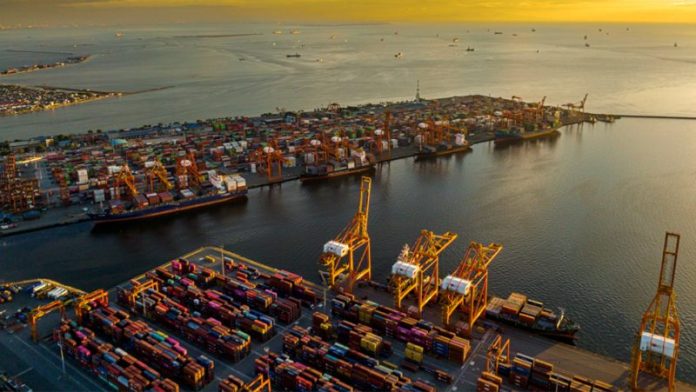-
Port of Manila handled up 10% more cargo in 2022 from, making it the seventh busiest port in Southeast Asia
-
Port of Cebu ranked 13th with a 2.5% increase while Port of Davao was at 15th spot with a 0.1% improvement
-
On a per terminal basis, Manila International Container Terminal ranked third among the largest gateway ports in the region (excluding transshipment and domestic volumes) after handling 2.51 million TEUs in 2021
-
MICT also bagged the 11th spot out of the top 20 terminals in the region while North Port ranked 19th
The Port of Manila was the seventh busiest port in Southeast Asia in 2022, handling 10% more cargo year-on-year, according to the Philippine Ports Authority (PPA).
Port of Manila was also the only gateway in Southeast Asia that registered double-digit growth in 2022, to 5.47 million twenty-foot equivalent units (TEU) from 4.98 million TEUs in 2021, PPA said citing the data from independent maritime research consultancy firm Drewry.
The ports agency said the largest ports in the region recorded either single-digit increases or declines in container volumes.
As for other Philippine ports, Port of Cebu ranked 13th with a 2.5% increase to 937,052 TEUs in 2022 from 914,111 TEUs in 2021; and the Port of Davao at the 15th spot with a 0.1% improvement for handling 824,898 TEUs in 2022 from 824,343 TEUs in the previous year.
On a per terminal basis, PPA said Manila International Container Terminal (MICT), the country’s largest international gateway, ranked third among the largest gateway ports in the region (excluding transshipment and domestic volumes) after handling 2.51 million TEUs in 2021 – just behind Westport Kelang Multi Terminal in Malaysia and Saigon NewPort-Cat Lai Terminal in Vietnam.
In terms of all container cargoes, including gateway, transshipment and domestic containers, MICT bagged the 11th spot out of the top 20 terminals in the region while North Port, the country’s largest domestic terminal, ranked 19th.
PPA general manager Jay Daniel Santiago in a statement said this “success is a product of commitment, hard work and transparency to create more port [infrastructure] that are at par with global trade.”
He added: “The PPA is further improving its level of commitment towards strengthening and evolving Philippine ports to cater to global demands. The figures last year as shown in the data are a testament that Philippine ports are one of the leading ports in Southeast Asia.”
He said the growth in container volume translates into better figures for the economy, creating a ripple effect on all sectors: “These figures are not just development in the Philippine ports’ Southeast Asia ranking, these are contributing factors that can positively impact our economy, including transportation, logistics, and manufacturing, generating employment opportunities and contributing to economic development.”
Data from PPA’s website showed ports under its jurisdiction handled 7.91 million TEUs in 2022, up 7.2% from the 7.37 million TEUs recorded in 2021. For the first quarter of the year, container traffic rose 5.6% to 1.99 million TEUs from 1.89 million TEUs in the same quarter last year.
For 2023, Santiago earlier said the target increase for cargo and containers is 7%-8%.
RELATED READ: ICTSI among top global terminal operators – Drewry





